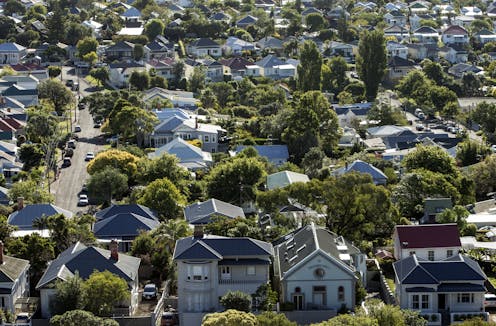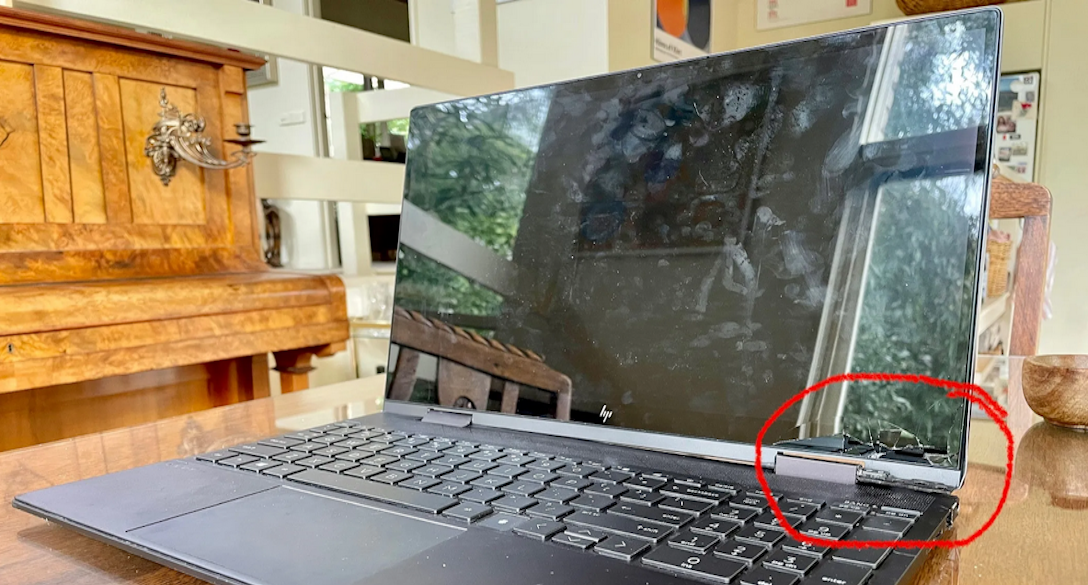see how your neighbourhood stacks up
- Written by Tom Logan, Lecturer of Civil Systems Engineering, University of Canterbury

If you live in a city or town, you have a mental map of the places you travel to most. But how accessible are those places, and how long does it take you to get there? Most of all, could you do everything you need to do without a car?
These are the kinds of questions advocates for more liveable urban areas are asking now with greater urgency. Climate change, rising fuel costs and social connectedness are driving the move towards “15-minute cities” – although the actual number of minutes can vary depending on a city’s ambition.
Copenhagen, for instance, is aiming to be a five-minute city, while Melbourne is opting for ten. New Zealand cities are also getting on board, with Christchurch and Wellington wanting to be 15-minute cities, and Hamilton a 20-minute city[1].
The idea is not that you can get across an entire city in that time, rather that your own neighbourhood has everything you need within reach by foot, bike or public transport. For simplicity, we just call it the “x-minute neighbourhood”.
Our recently published research[2] evaluates all of New Zealand’s urban areas and compares them with the largest 500 cities in the US for residents’ proximity to daily needs. So, how do they currently stack up and what are some of the key challenges?
How we measured accessibility
New Zealand’s emission reduction plan[3] requires a 20% decrease in urban vehicle travel by 2035. This shift towards sustainable transport modes will also require changes to the form of our urban areas.
New transport strategies are beginning to reflect this. But how do cities evaluate urban change, measure the impact of proposed development, or effectively retrofit existing neighbourhoods?
Read more: 12 best ways to get cars out of cities – ranked by new research[4]
By evaluating New Zealand’s 42 urban areas and the largest 500 US cities, our goal was to propose a consistent and transparent approach for reporting. We also wanted to help cities make the transition to sustainable urban design effectively and efficiently.
We developed a dashboard to show the proximity of neighbourhood blocks (the smallest geographical unit in the New Zealand census) to their nearest amenities. If you live in one of these urban areas you can check out your neighbourhood’s accessibility using our interactive guide[5].
The dashboard enables councils to understand accessibility (and lack of it) in their towns and the neighbourhoods within them. Our ongoing research aims to identify the locations with the best accessibility, which should help with incentives and guidance for new development.
Mixed messages
So how do New Zealand cities rate? Wellington is the most accessible, with 61% of residents living within 15 minutes’ walk of the amenities we studied. But this pales next to New York (88%) and San Francisco (73%).
Auckland has only 43% of residents within 15 minutes of core amenities. Hamilton (with the goal of becoming a 20-minute city) scored 39%. And Christchurch (with an unofficial target of 15 minutes) also came in at 39%.
Read more: 10 images show just how attractive Australian shopping strips can be without cars[6]
Notably, it is access to the supermarket that is most detrimental to a city’s score. Accessible grocery stores are a key part of walkable neighbourhoods, and without them we’ll never achieve transport emission goals.
It’s disappointing, then, that this important factor was overlooked in the Commerce Commission’s review of the supermarket sector[7]. This failure to factor in climate change to industry and competition policy was underscored by the prime ministerial visit[8] to US bulk retailer Costco on its arrival in New Zealand.
This type of car-dependent development is the antithesis of walkable, sustainable neighbourhoods, and of the government’s emissions reduction plan.
The benefits of accessible neighbourhoods
The primary motivation for better urban design is to encourage active transport modes and reduce reliance on cars. But the benefits far exceed transport emissions alone.
Increased social cohesion is one co-benefit. In Paris, they call this form of urbanism “neighbourhoods of proximities” because they’re increasing proximity between people and places, but also between people themselves. This improves social connection and has mental health benefits.
Public health is another benefit. Studies[9] have shown Barcelona’s approach (which also prioritises active transportation through urban design) has avoided around 700 premature deaths a year due to reductions in air pollution, noise and heat, and increases in physical activity.
There are also huge benefits for young, older and lower income families who become less reliant on cars. There are flow-on benefits in the form of economic vibrancy and urban safety, too.
Read more: Greening the greyfields: how to renew our suburbs for more liveable, net-zero cities[10]
Getting out of our cars
Finally, we also need to ask whether 20-minute and 15-minute neighbourhoods can achieve the benefits they seek. In reality, how likely are people to walk 20 minutes carrying groceries? Studies from overseas suggest much shorter distances between homes and amenities might be needed.
This will vary depending on the person, their age and fitness. But it will also depend on the amenities themselves. We might be happy to bike or walk further to school, for example, than we would be to walk home from the grocery store.
So while the concept of the 15-minute or 20-minute city might be useful to communicate a broad vision and bring people together, it shouldn’t be taken too literally.
The greater aim should be to improve accessibility as much as possible to reduce our dependence on cars and reclaim our neighbourhoods for people. This will benefit our health, sustainability and communities.
References
- ^ 20-minute city (hamilton.govt.nz)
- ^ recently published research (authors.elsevier.com)
- ^ emission reduction plan (environment.govt.nz)
- ^ 12 best ways to get cars out of cities – ranked by new research (theconversation.com)
- ^ interactive guide (projects.urbanintelligence.co.nz)
- ^ 10 images show just how attractive Australian shopping strips can be without cars (theconversation.com)
- ^ review of the supermarket sector (comcom.govt.nz)
- ^ prime ministerial visit (www.1news.co.nz)
- ^ Studies (www.sciencedirect.com)
- ^ Greening the greyfields: how to renew our suburbs for more liveable, net-zero cities (theconversation.com)













